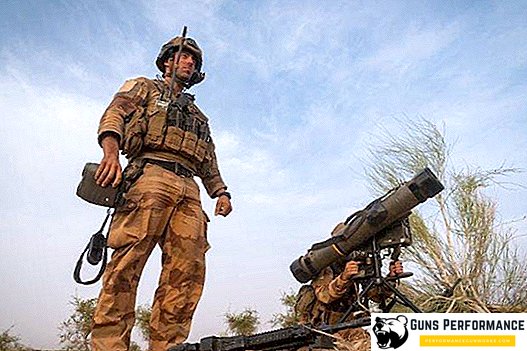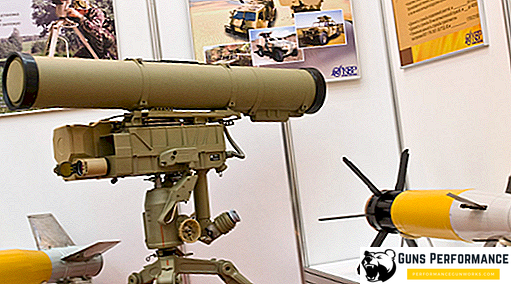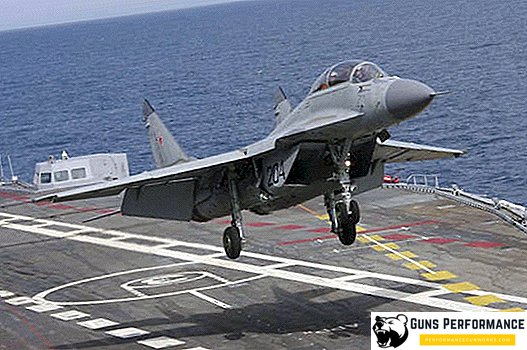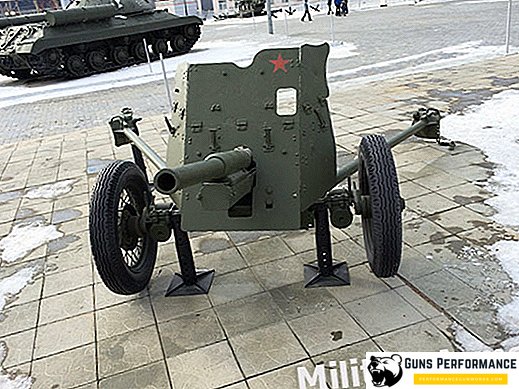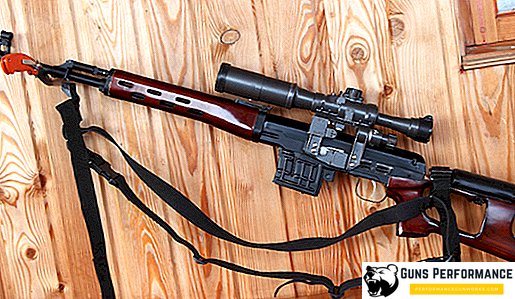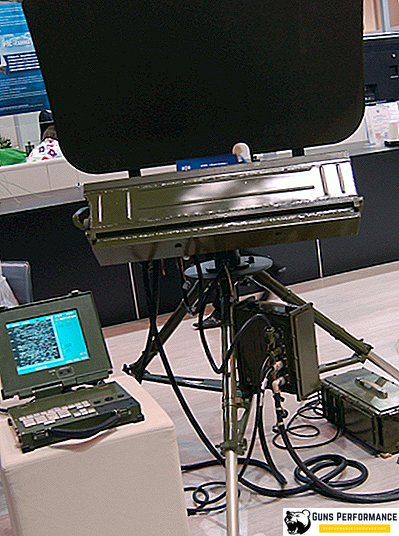The second world war is often called the "war of engines", and this is absolutely true. Tanks were the main shock force of the conflict. Already in the second half of the war, it became clear that artillery systems were losing in competition with tank armor. In order to successfully hit new types of armored vehicles, it was necessary to increase the caliber of guns, increase the initial velocity of the projectile, invent new types of ammunition. This led to an increase in the mass of guns, a decrease in their mobility and an increase in cost. It was necessary to look for a radically different way.
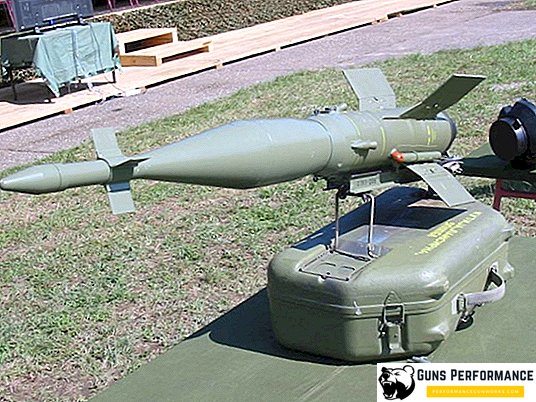
The development of new types of anti-tank weapons were carried out by designers in many countries of the world, searches were conducted in several directions at once. The most promising of these was the creation of anti-tank guided missile systems (ATGW), which today are the most formidable opponents of armored vehicles on the battlefield.
Much time has passed since then, anti-tank guided missiles (ATGM) changed beyond recognition, they managed to participate in dozens of conflicts, and almost always this type of weapon showed high efficiency. Today, anti-tank systems are one of the most widely used weapons of ground forces, the sales of anti-tank complexes in the world are constantly growing - this is one of the most dynamic segments of the arms market. Today, third-generation missile systems are already in service with some countries of the world.
In this material, we will discuss one of the first domestic ATGMs - the anti-tank missile system "Malyutka".
A bit of history
The first ATGM appeared during the Second World War. The pioneers in this area were the Germans. The German army was armed with anti-tank missile weapons (Panzerfaust and Panzerschreck), which used ammunition with a cumulative warhead, but their range was clearly insufficient.
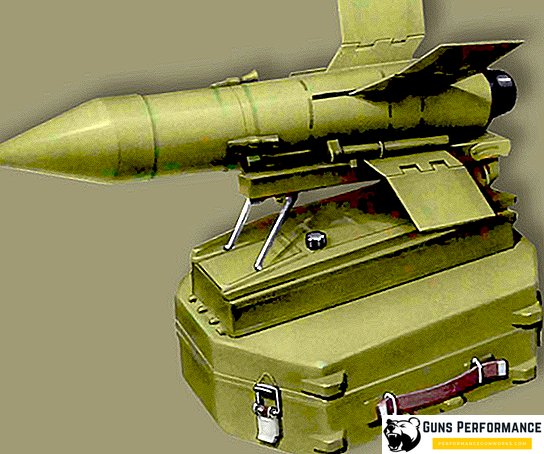
Therefore, in 1943, work began on the creation of the Panzerabwehrrakete X-7 (defensive anti-tank missile), which were successfully completed by the end of 1944. Until the end of the war, the Germans managed to make several hundred ATGMs X-7 Rotkappchen ("Little Red Riding Hood"), but evidence of their combat use was never found. Most likely, these weapons simply did not have time to deliver to the troops.
After the end of the war, German practices fell into the hands of the Allies. Already in 1948, the SS-10 ATGM was created by the French, and the Cobra missile system in Switzerland.
This weapon belongs to the first generation of ATGM, the main difference of which was the manual guidance of the missile operator to the target. Control of the ammunition took place on the wire, which lasted after the rocket.
In the USSR, they did not immediately appreciate the potential of the new weapon and paid attention to anti-tank missile systems only after their successful use during the conflict between Egypt and France in 1956. It was after this that the decision of the Soviet government to begin the development of a new missile weapon appeared.
The first Soviet ATGM was the "Bumblebee", it was put into service in 1960. However, its production was short-lived: from 1961 to 1966.
In 1960, a competition was announced for the development of a new anti-tank missile system, and products from two design bureaus took part in it: the TUL-TsKB-14 and the Colon-TSC. The new complex had to have two modifications: portable and self-propelled. The mass of the rocket should not exceed 10 kilograms.
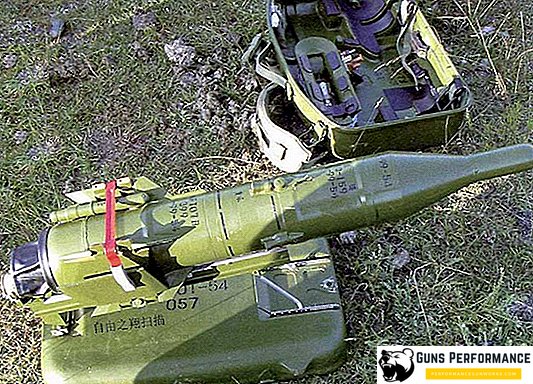
Without going into the details of the competition, we can say that the products of the Kolomna Design Bureau turned out to be better. The Tula ATGM did not meet the specified range of flight, the requirements of the military on armor penetration, although many innovative solutions at that time were implemented.
The test launches of the new ATGM, which in the future received the name "Baby", began in 1961.
ATCM "Baby" can be called the first serious victory of the Soviet military-industrial complex in a relatively new for him weapons field. This ATGM was produced for more than two decades (1963-1984), it took part in dozens of conflicts and showed its high efficiency. He exploited today. A large number of these weapons remained in the military warehouses of the former Soviet republics.
"Baby" was in service with 45 countries of the world, under license this complex was manufactured in China, Iran, Poland, Czechoslovakia, Bulgaria.
From the very beginning of the work, the designers sought to make the “Baby” simpler and cheaper to produce and operate, and also to ease its mass. Various plastics were widely used in the construction of the complex, and the control system was made single-channel.
In the late 60s the rocket of this complex was modified, and it received the designation "Baby-2".
This complex took part in the war in Vietnam, there is documentary evidence of its successful use against American armored vehicles. However, the “starry hour” of the “Baby” was the Arab-Israeli conflict of 1973, when with its help the ground forces of Israel suffered significant damage.

Description of construction
Complex "Baby" is designed to combat the enemy's armored equipment, the destruction of long-term shelters and enemy firing points.
The portable complex consists of a control panel, which weighs 12.4 kg and two anti-tank guided missiles 9M14, placed in special backpacks, each of which weighs a little more than eighteen kilograms.
A suitcase-knapsack also serves as the basis for a launcher in a combat position. The calculation of the complex consists of three fighters: two of them carry suitcases with rockets, and the operator-gunner (he is the commander of the calculation) carries a control panel with a monocular sight and a missile control system.
The complex was deployed in a combat position in one minute and forty seconds. The 9M14 missile has a cumulative warhead capable of penetrating 200 mm of armor with an inclination of 60 °. The mass of explosive is 2.2 kg. Contact fuse, it cocked at a distance of 70-200 meters.
The ATGM is controlled manually through a wire that is unwound from the rocket itself. The power supply of the ammunition occurs on the wire.
Each rocket consists of two parts, they quickly and easily connect before launch. At the rear is a sustainer and starter motor, a gyroscope, a steering machine, and a wire reel. The wings of the rocket are folded towards each other, which provides the ammunition with compactness during transportation.
In addition to portable, there is also a self-propelled anti-tank complex "Baby", it is also equipped with a 9M14 missile. It is based on the BRDM, one machine can carry up to fourteen missiles.
Specifications
| Firing range, m | 500-3000 |
| Warhead | cumulative |
| Penetration, mm: | |
| at a meeting angle of 60 ° | 200 |
| at a meeting angle of 90 ° | 400-460 |
| Calculation, people: | |
| portable option | 3 |
| self-propelled option | 2 |
| Ammunition, missiles: | |
| portable option | 2 |
| self-propelled option | 14 |
| Weight, kg: | |
| rockets | 10,9 |
| warhead | 2,6 |
| explosive | 2,2 |
| Rocket length, mm | 860 |
| Rocket diameter, mm | 125 |
| Wingspan, mm | 393 |
| Airspeed, m / s: | |
| maximum | 140 |
| average | 115 |
| Flight time at maximum range, with | 26 |


